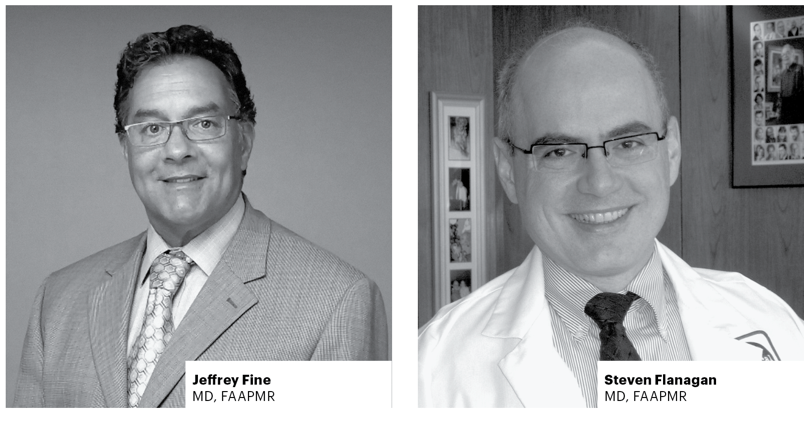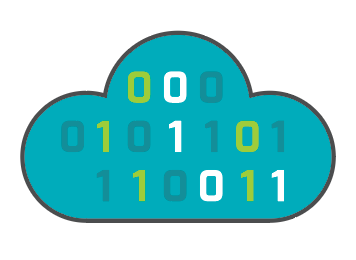
Jeffrey Fine, MD, FAAPMR
Associate Professor, Rehabilitation Medicine NYU Grossman School of Medicine
Medical Director, Inpatient Rehabilitation Rusk Brooklyn
Vice Chair, Rusk Rehabilitation Network Development
Steven Flanagan, MD, FAAPMR
AAPM&R Vice President
Professor, Rehabilitation Medicine NYU Grossman School of Medicine
Chair, Department of Rehabilitation at NYU Grossman School of Medicine
Medical Director, Rusk Rehabilitation at NYU-Langone Health
AAPM&R’s Registry is the specialty’s first nationwide clinical data registry which will provide physiatrists the data to demonstrate their value to improve their care by tracking their success on a national scale and studying the most effective treatments for their patients. We are thrilled to currently be working with seven institutions on this data collection effort and are always looking for others to get involved.
From policy-makers to payers to hospital administrators, all stakeholders within healthcare are utilizing data to understand the outcomes of medical providers in their system. One such example is New York University-Langone Health (NYU), an early adopter of AAPM&R’s Registry and a champion for data collection efforts across the specialty.
We recently spoke to Steven Flanagan, MD, FAAPMR, Academy Vice President, and Jeffrey Fine, MD, FAAPMR, AAPM&R Registry Steering Committee member, who shared their institution’s data collection journey with AAPM&R’s Registry and why other physiatrists should participate for the betterment of the specialty.
Showing Value Through Evidence
“When we talk to other physiatrists about the value that PM&R has in healthcare, we’re preaching to the choir—we all know it; we live it, and we see the value that we add” said Dr. Flanagan. “However, if you look for actual evidence, it would be harder to find. As healthcare is changing, it becomes important to show our value through evidence. Evidence, which is real, collected across the country, and encompasses a host of conditions—and that’s what AAPM&R’s Registry can help us do. We want to clearly demonstrate our relevance through data. We want to be part of the conversation, now and in the future. With NYU’s storied history, we had an obligation to be part of this important initiative.”
“As a preferred facility for stroke, with Joint Commission certification for stroke rehabilitation, we are already using the data we’re collecting around stroke rehabilitation to establish and provide best practices in stroke care. The Registry is an extension of this effort,” said Dr. Fine. “We solve the unsolvable problems with stroke, and it’s our responsibility to contribute our knowledge and expertise in stroke rehabilitation and share that with other providers. The Registry gives us that opportunity—we’re helping to build something that allows other teams to learn from our methods and implement them at their facility.”
A Data-driven Institution

Data collection and quality improvement are already at the forefront of NYU’s metric-centered mission, with the institution collecting Patient Reported Outcomes (PRO) Measures using the Patient Impact Scale at the time of admission and upon discharge. “We know that connecting with patients, not just during their hospital stay but afterwards, helps them recognize the care that we provide on the inpatient side doesn’t end when they go home. There’s continuity there. We do have a vested interest in their on-going recovery from a quality improvement standpoint, and feel it has a positive impact on patient satisfaction scores,” said Dr. Fine.
“Our Dean and CEO is very focused on showing quality through data, and we believe the Registry is another means by which we can record and gauge how were doing in various areas, while also comparing us to other programs across the country,” said Dr. Flanagan. “If we’re not the best, we want to know what the best is doing and what their outcomes are—it gives us something to shoot for! We should never be satisfied; we can use the data to make ourselves better.”
How Their Journey Began
NYU’s Registry journey began at the 2019 Annual Assembly where Dr. Fine visited staff at our booth. “I met staff at the booth and learned about the Registry. I then approached Steve and said, ‘Hey, we should do this! I’ll do all the work,’ and Steve said yes—as easy as that!” But all kidding aside as a member of AAPM&R’s Board of Governors, Dr. Flanagan was already aware of the Registry and it was really important to him to have a champion in Dr. Fine who also saw the value in it. “You really need a champion to run it through the organization—Dr. Fine was our champion. We connected with the right people internally; there were a lot of folks that we needed to interact with, not just with IT, but with regulatory and legal,” stated Dr. Flanagan.
“There were also some challenges; we really had to explain what the Registry was, especially with it being relatively new. But this was NYU’s opportunity to guide some of the variables and important information that were going to be collected and gleaned from its repository. So being part of AAPM&R’s Registry at this initial stage, provided a lot of influence for us to help better the specialty,” said Dr. Flanagan.
Going the Distance
Because the Registry is a long-term commitment (three-plus years), Drs. Fine and Flanagan understand there may be hesitation from other physiatrists about participating in this robust data collection effort. However, both encourage members to learn more about AAPM&R’s Registry and understand why it is so important for the specialty.

“The main focus of the Academy right now is PM&R BOLD; really taking a look at where our specialty is going and the Registry fits into that mission of being relevant, essential and indispensable in the delivery of healthcare. And that’s important for the field, which means it’s important for every single physiatrist. It becomes vitally important that we have the evidence to show that we’re adding value to healthcare, to outcomes, to the patient experiences, AND that we do it more efficiently. The data collected by the Registry will help us do that,” said Dr. Flanagan.
Dr. Fine stresses the importance of physiatrists from all practice areas and settings to get involved with this initiative. “This is an opportunity for smaller programs to help shape this important Academy project. We understand the value that we contribute to patient care, but what’s lacking is a robust data set that helps us enhance our outcomes. The Registry is that tool—it’s a complement to the IRF Measures and GG Indicators that we currently use to define what types of interventions work effectively in terms of outcomes. With the Registry, we can capture data on thousands and thousands of patients, giving us the aggregate data to show patterns to further improve patient outcomes.”
Owned by Physiatry as a Specialty
Having a robust data set that’s “owned” by the Academy is another key selling point for both Drs. Fine and Flanagan. “The Registry has a producible, which is aggregate data that Academy members can integrate into their care plans to make patient management easier and better. Physiatrists have the interest, energy and intent to follow this (initiative) through. Three years isn’t a long time when you think about building a foundational resource for the Academy which will enhance physiatric care,” stated Dr. Fine.
“The Registry is meant to help advance our field, which trickles down to helping every physiatrist. Even if you’re not an Academy member. The AAPM&R Registry is for ALL physiatrists,” Dr. Flanagan said in closing.
Take the next step in your data journey, learn more about the Registry at aapmr.org/registry.